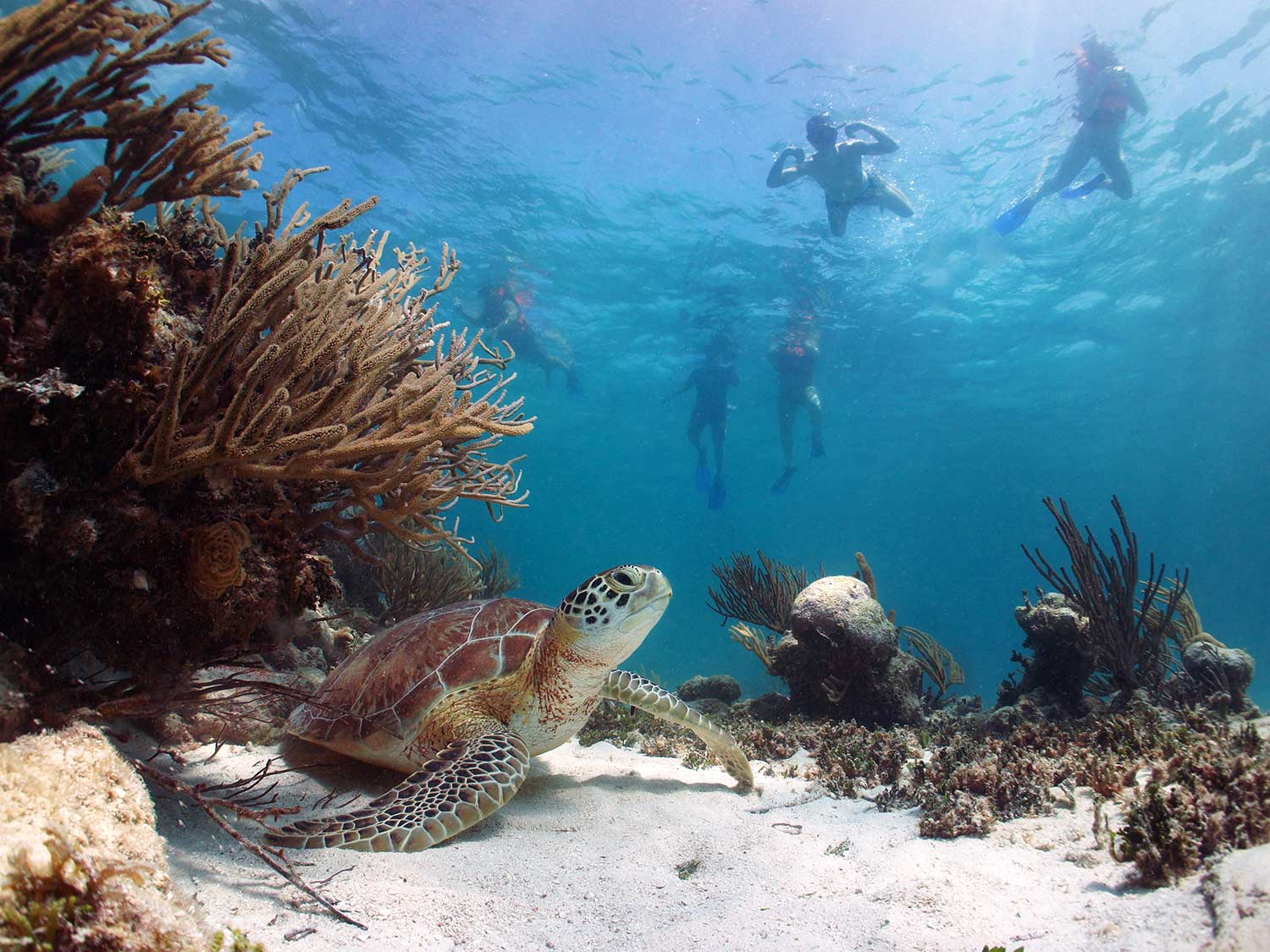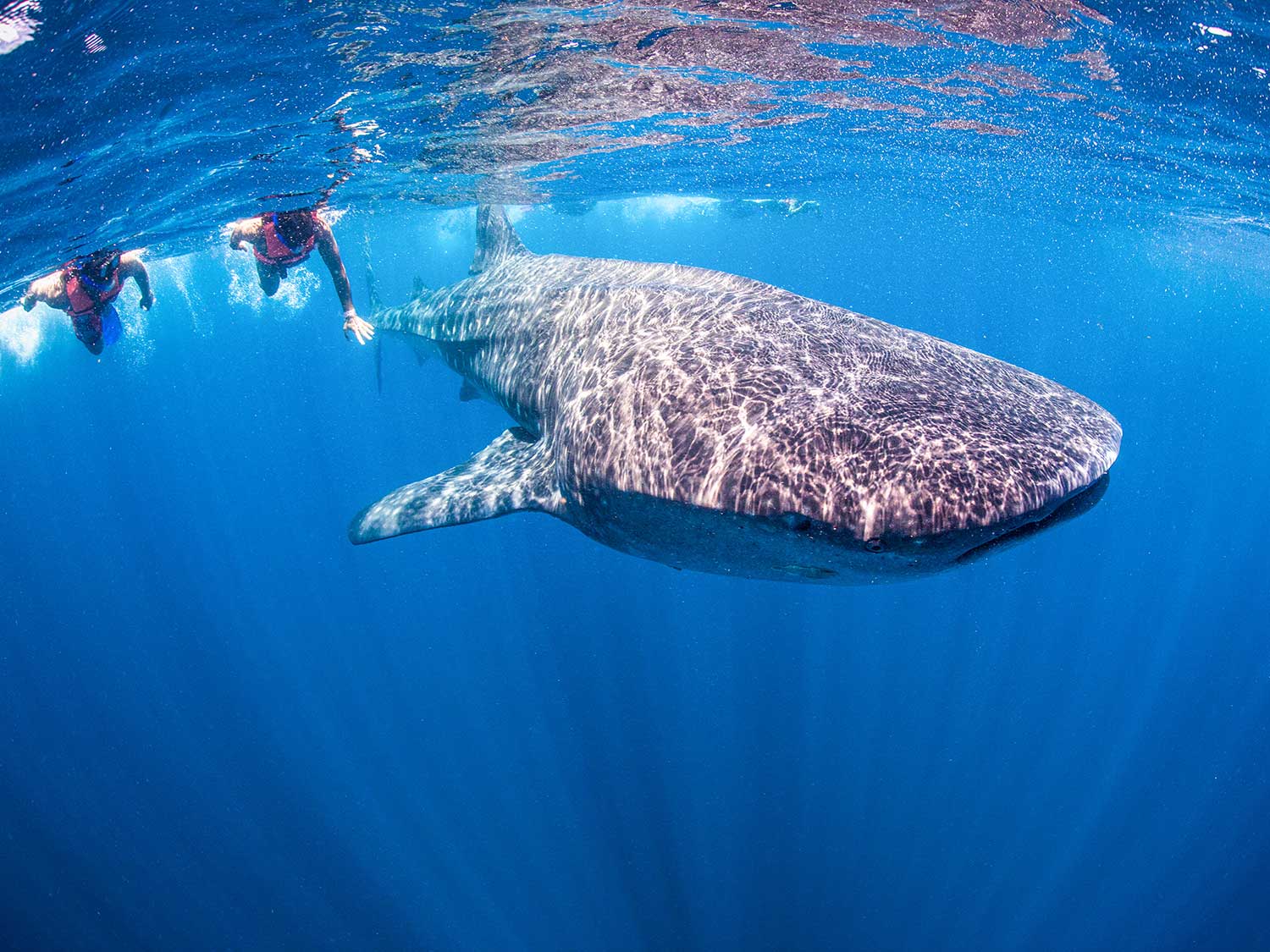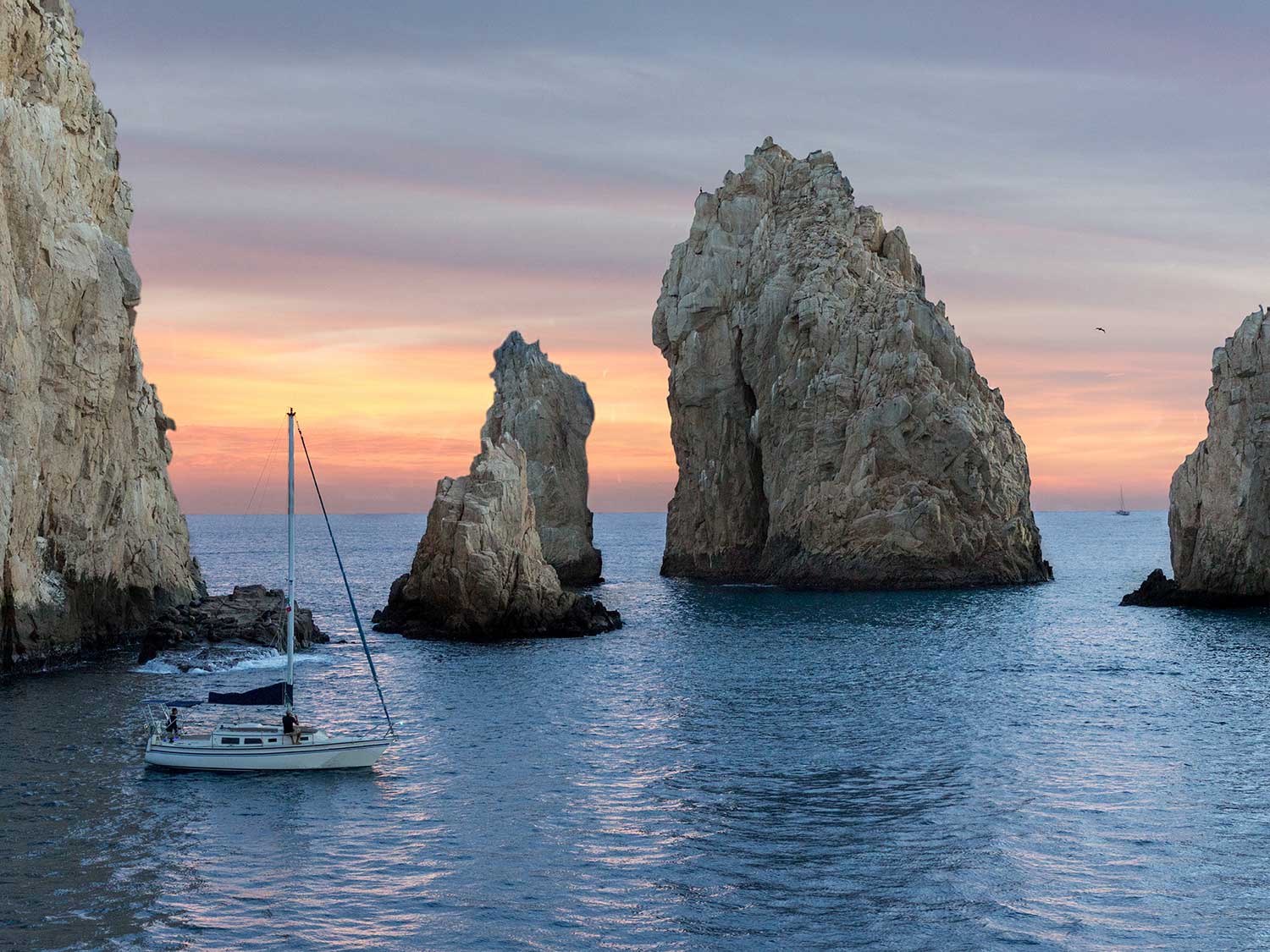The Best Snorkeling In Mexico
An adventurer’s soul thrives here, as the wide variety of landmarks and wonders, both on land and underwater, creates an impression of endless action.
Mexico's offerings are as varied as its people—each region boasting a unique, but equally impressive way to dip fins into the underwater world. From watery caverns to the biggest fish in the sea, the one common thread is that throughout this warm and picturesque country, memorable experiences are waiting for those ready to jump in.
Akumal—Place of Turtles
Akumal means "place of turtles" in the Mayan language, due to the hundreds of turtles who arrive every summer to lay their eggs on the soft white sands south of Playa del Carmen. More than just a turtle nesting area, exotic coral reef surrounds protected Akumal Bay.
Aqua Excursions is one top area company making the most of the unique waters surrounding the reserve, with daily trips to snorkel amongst dozens of free-swimming turtles and plentiful schools of brilliantly colored tropical fish.
Cozumel—National Coral Reef Marine Park
Cozumel has long been considered one of the best dive destinations in the world, known for its tumbling current that sweeps away debris and topography of finger channels, swim-throughs and healthy ridges. This also creates a fantastic snorkel opportunity. Palancar Reef & Columbia Reef in Cozumel has some of the best visibility in the Caribbean, hitting 100 feet on a sunny day.
Remarkably vibrant reef is home to a host of tropical fish, green morays topping six feet, sea turtles, stingrays, crabs and puffer fish, cavorting among the colorful corals, sponges, gorgonians and sea fans.
Isla Mujeres—Whale Sharks and Underwater Sculpture Gardens
Historically, Isla Mujeres doesn't top many snorkel lists. But in recent years, the annual whale shark migration, which takes place from June 1st until September 15th, has drawn plenty of visitors who welcome these gentle giants for a bucket list-level experience.
Reaching up to 50-feet in length, the docile sharks and largest fish in the sea come to the waters around Isla Mujeres, Contoy and Holbox to feed. Since they do this at and near the surface, snorkelers have the edge on divers for spending quality time with the amazing creatures.
For those visiting outside the migration, Manchones Reef—a vibrant plot of coral with abundant sea life—is also home to an underwater MUSA life-sized sculpture exhibit. (Both are best enjoyed on a tour; try Pocna Dive Center.)
Tulum—Cenotes
Tulum, known for an indy laidback vibe compared to much of the Riviera Maya, is home to an impressively maintained ruins and beach—but most visitors head inland for their snorkel experience. Cenotes, caverns leading to an underwater river system, offers refreshing, clear swimming and views of unique formations.
Cenote Dos Ojos—filled with stalactites and stalagmites—made of two 70-meter diameter sinkholes connected by a 400-meter passageway. Brave snorkelers can swim through a narrow passage to reach the very dark "Bat Cave" (underwater flashlights are often used), inhabited by hundreds of bats. For those looking for a more open experience, serene Gran Cenote is bordered by so many beautiful lirios and plants lining the cavern, it is nicknamed the Garden Cenote.
Cabo San Lucas—Sand Waterfalls and Whaleshark Redux
Cabo San Lucas boasts a lot of wildlife, but often that of a nature variety is tougher to access. One swimmable beach can best be enjoyed at Sur Beach Club, which also rents paddle boards and offers nominal-fee water taxis over to the famed "Arch". A combo guided SUP-Snorkel leaves from the beach to cross the channel to Los Arcos and Pelican Rock.
Underwater sand waterfalls, sea lion colony and fish teasing about the edge of Lover's Beach made this a wonderful excursion. For those with eyes on a bigger prize, but who missed the whale shark migration on the Caribbean coast, the season runs from October near Cabo with sails to swim with the creatures leaving for La Paz from Cabo's downtown marina.


